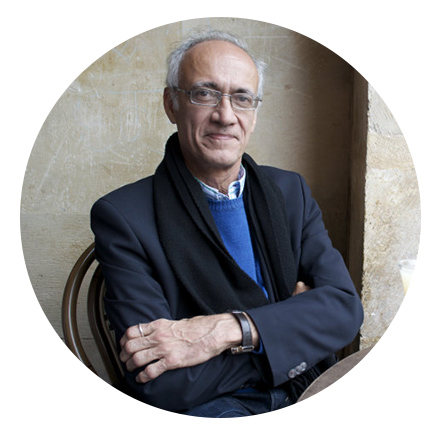With no previous experience except for having frequented the theater as a boy, at the age of seventeen I directed a play with a cast of friends and classmates. It was presented informally at our high school and also in a more suitable space, open to the public. The play was called Dress Rehearsal: it touched on the subject of drugs and above all, as its title suggests, the mise-en-scène. It was written by my father, whose innate vocation as an actor was cultivated while he was a young man through scattered performances for local charities. Neither he nor I continued down this theatrical path, although I did become a staunch reader and watcher of plays. Curiously enough, I would later reencounter drama a different way: some of my stories written for children have been adapted for the stage over the past twenty years or more. In the beginning, if the troupes were formal, I would ask that they send me a copy of the adaptation for my approval. But as time passed, I preferred not to, giving free rein to those who do their job with the awareness that during the transit from narration to drama, something has got to give. Sometimes I have attended these performances. Others, I have learned about them through the press, or a webpage. Sometimes the literal content of the text is respected. Others, it acts as a source of inspiration for the creation of a new work. The Worst Lady in the World is the story of mine that has been staged most often, whether as a monologue or a marionette or shadow-puppet show, whether as a dramatic reading or a school play or a full-fledged professional performance. The director of a theater company once told me that they had to rescue the actress in the lead role from an enraged audience of young people who saw in her the true embodiment of evil: reality and fiction had melded in their collective imagination. I have also born witness to the demands, during a performance, that some children familiar with the story make whenever the actors follow a script that takes liberties with the original.
A story well-told on stage doubtless captivates the children in the audience and somehow transforms them. Leaving the theater after a show, the world seems different: it has been touched by a performance that allows members of the audience to see beyond the surface. And frequently, a cathartic reaction takes hold upon seeing themselves projected through certain characters or situations. Unlike the solitude of reading, once a story makes the leap onstage, the experience changes: now it is something that is happening before our very eyes, something we may share with others. We are no longer the sole witnesses. The tale comes to life beyond our imagination and somehow, transforms us into protagonists, because we entrust the characters with our emotions and fears, our desires and frustrations. Once they are staged, fiction, music, dance, song, poetry, games, magic, and juggling are all harmonically assembled, along with the resources typical of the theatrical arts: wardrobe, lights, scenery, makeup, props. The contributions made to our cultural heritage –with an emphasis on literature and theater– invariably lead to children exercising their imaginations and finding greater meaning in life.
Francisco Hinojosa
(Mexico City, 1954) is one of Mexico’s leading authors of children’s literature. Soon after completing his literature studies he began writing poetry, before turning his hand to short stories and novels for children. In 1984 he won the IBBY Prize for his book La vieja que comía gente (The Old Lady Who Ate People), and he has published ten other books with FCE. This year he was selected by Mexico’s National Council for Culture and Arts (Conaculta) as ambassador to represent and promote children’s and young adults’ literature in Mexico.






